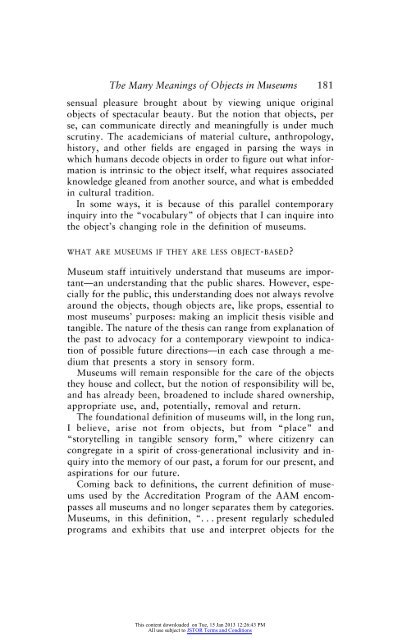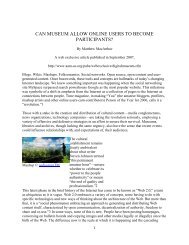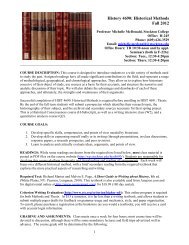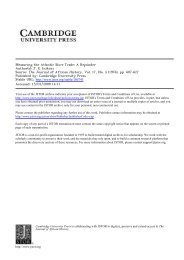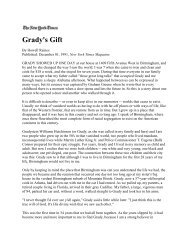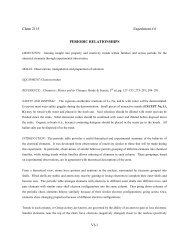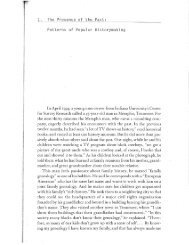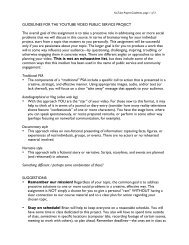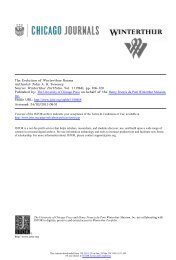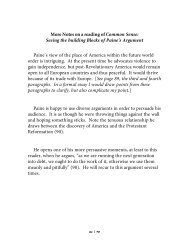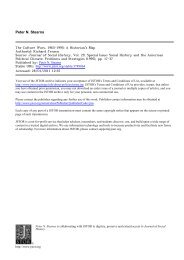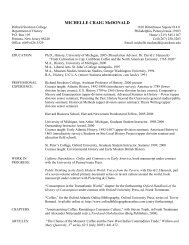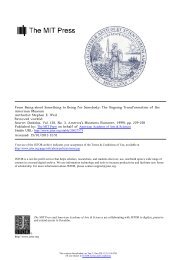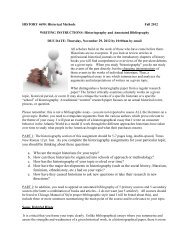What Is the Object of This Exercise? A Meandering Exploration of ...
What Is the Object of This Exercise? A Meandering Exploration of ...
What Is the Object of This Exercise? A Meandering Exploration of ...
You also want an ePaper? Increase the reach of your titles
YUMPU automatically turns print PDFs into web optimized ePapers that Google loves.
The Many Meanings <strong>of</strong> <strong>Object</strong>s in Museums 181<br />
sensual pleasure brought about by viewing unique original<br />
objects <strong>of</strong> spectacular beauty. But <strong>the</strong> notion that objects, per<br />
se, can communicate directly and meaningfully is under much<br />
scrutiny. The academicians <strong>of</strong> material culture, anthropology,<br />
history, and o<strong>the</strong>r fields are<br />
engaged<br />
in parsing <strong>the</strong> ways in<br />
which humans decode objects in order to<br />
figure<br />
out what infor<br />
mation is intrinsic to <strong>the</strong> object itself, what requires associated<br />
knowledge gleaned from ano<strong>the</strong>r source, and what is embedded<br />
in cultural tradition.<br />
In some ways, it is because <strong>of</strong> this parallel contemporary<br />
inquiry into <strong>the</strong> "vocabulary" <strong>of</strong> objects that I can<br />
inquire into<br />
<strong>the</strong> object's changing role in <strong>the</strong> definition <strong>of</strong> museums.<br />
WHAT ARE MUSEUMS IF THEY ARE LESS OBJECT-BASED?<br />
Museum staff intuitively understand that museums are<br />
impor<br />
tant?an<br />
understanding that <strong>the</strong> public shares. However, espe<br />
cially for <strong>the</strong> public, this understanding does not<br />
always revolve<br />
around <strong>the</strong> objects, though objects are, like props, essential to<br />
most museums' purposes: making<br />
an<br />
implicit <strong>the</strong>sis visible and<br />
tangible. The nature <strong>of</strong> <strong>the</strong> <strong>the</strong>sis can range from explanation <strong>of</strong><br />
<strong>the</strong> past to<br />
advocacy for a<br />
contemporary viewpoint<br />
to indica<br />
tion <strong>of</strong> possible future directions?in each case<br />
through<br />
a me<br />
dium that presents a story in sensory form.<br />
Museums will remain responsible for <strong>the</strong> care <strong>of</strong> <strong>the</strong> objects<br />
<strong>the</strong>y house and collect, but <strong>the</strong> notion <strong>of</strong> responsibility will be,<br />
and has already been, broadened to include shared ownership,<br />
appropriate use, and, potentially, removal and return.<br />
The foundational definition <strong>of</strong> museums will, in <strong>the</strong> long run,<br />
I believe, arise not from objects, but from "place" and<br />
"storytelling in<br />
tangible sensory form," where citizenry<br />
can<br />
congregate in a<br />
spirit <strong>of</strong> cross-generational inclusivity and in<br />
quiry into <strong>the</strong> memory <strong>of</strong> our<br />
past,<br />
a forum for our<br />
present, and<br />
aspirations for our future.<br />
Coming back to definitions, <strong>the</strong> current definition <strong>of</strong> muse<br />
ums used by <strong>the</strong> Accreditation Program <strong>of</strong> <strong>the</strong> AAM encom<br />
passes all museums and no<br />
longer separates <strong>the</strong>m by categories.<br />
Museums, in this definition, "... present regularly scheduled<br />
programs and exhibits that use and interpret objects for <strong>the</strong><br />
<strong>This</strong> content downloaded on Tue, 15 Jan 2013 12:26:43 PM<br />
All use subject to JSTOR Terms and Conditions


